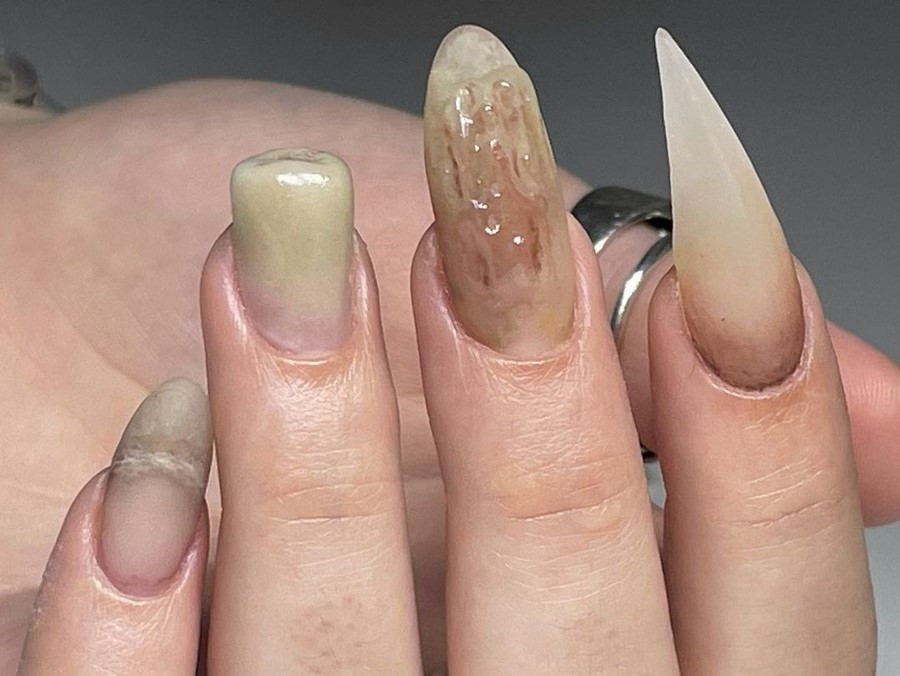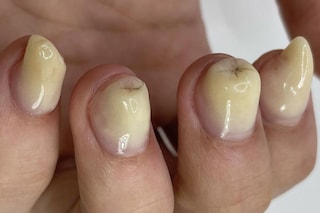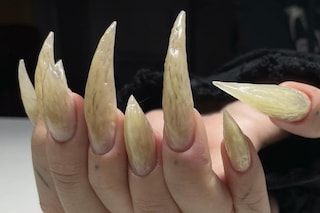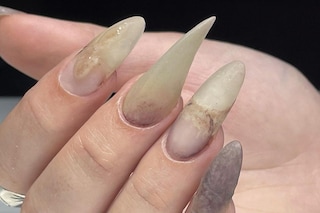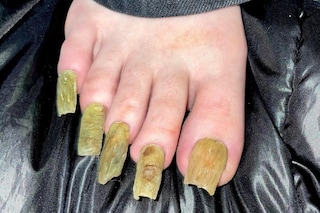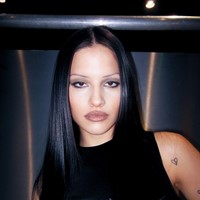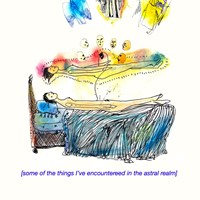Whether it’s discomfort, disgust or awe, these unconventional designs are undeniably grabbing people’s attention
- THE LOOK: Grotesque nails inspired by everything unconventional and repulsive – from dirt and fungus to vertebrae and rotting flies. If it’s gross, it’s here!
- WHO’S DOING IT? First popularised by Russia-based nail artists, the trend has spread and is now beginning to gain traction with people around the world.
- HOW CAN I GET IT? Spend 20 hours foraging in untamed woodlands, transform into a 100-year-old faun, or reach out to some of the nail artists!
Last year Julia Fox declared ‘ugly is in’ and hailed dirty girls as the new it-girls. If the grotesque twist we are witnessing in nail art trends is anything to go by, it seems her beauty predictions are coming true. Taking a darker turn, the maximalist manicures that once filled our explore pages with their dazzling, shiny or bejewelled sets are being overshadowed by nail art that resembles decaying teeth, fungus and rotting flies.
In a space where the grotesque meets the glamorous, these skilled nail artists can create a thriving dirty microcosm on a singular nail bed. Resembling the telling symptoms of fungal nail infection, or the brittle nails of the iron deficient, grotesque nails are purposefully disgusting designs. Their curated grossness emerges as the ultimate antithesis of the “clean girl” aesthetic, a stark rejection of banal beauty trends such as nostalgic 90s-inspired designs or blueberry milk nails.
Pioneering the trend are Russian nail artists like Varvara (@corrosion.nails) and Diana (@raw.nailsss), who are carving out a niche by finding inspiration in the unconventional. Whether it’s peeling paint on stairwells or cracked concrete sidewalks, both find beauty in the overlooked and often dismissed textures of the world around them. “I am inspired by textures such as tree bark, stone relief and water stains,” says Varvara, whose approach is grounded in nature. Here there are no archetypal roses or daisies, however. Instead, she experiments with rawer textures reminiscent of fossils and reptile scales. Diana also credits her inspiration to the natural world, with her work resembling mould spores, fungus and broken bones.
The spectrum of grotesque nail designs is wide. Some opt for ostentatious, extended nails. One design mimics a chain smoker’s discoloured patina, the nails a disturbingly vivid, piss-coloured hue. Their surface is a gritty and grainy texture with bulbous projections that rise from the surface reminiscent of tumorous growths. In another, the nails are sculpted into sharp predatory talons. Their marred surfaces are marked with microscopic serrations. Yellowing teeth and bone-like textures are popular, complete with vitamin-deficient ridges and porous holes. One design, by nail artist @marggie_nails, creates a distressing illusion of bleeding and bruising beneath the nail bed.
The newfound popularity of these nails can be attributed to a shifting perspective on beauty. “The boundaries of beauty perception are expanding; today, people are increasingly drawn to unconventional aesthetics,” reflects Diana. Varvara echoes this sentiment, emphasising that the demand for bold, outlandish designs comes from a collective weariness of traditional nail art. “People are growing tired of the so-called perfect nail art, and the easiest way to stand out is to do the opposite,” she explains.
In recent years, the industry has increasingly witnessed a departure from the traditional, conventional trends with looks such as duck nails and maximalist experimental designs championed by creatives like Tomoya Nakagawa and Lora De Sousa. The reclamation of ugly by the industry is no new trope – after all, Goblin Mode was Oxford word of the year back in 2022. The interplay between beauty and ugliness has historically been a source of creative exploration, underscoring the changing standards of industry ideals.
This year, the beauty sphere has been shifting towards something a little dirtier. The ascent of the ghoulish girl felt like a precursor to this grotesque evolution, defined by the embrace of messy eyeliner, purple eyebags, and aesthetics akin to it-girl Gabbriette. This nonchalant approach is also evidently parallel in fashion, with Miu Miu runways showcasing bedhead hair and Balenciaga models sporting bleached brows and bruises. We see this further emerge into the mainstream with the arrival of frumpy aesthetics, a trend that has the Depop girls scrambling for kilts and raiding their nan’s reading glasses.
Not everyone is a fan of the gross nail aesthetic, but Diana and Varvara find humour in the online hate. “I understand that this is not something that will be liked by everyone, but I’m glad that I managed to build a community of people who are ready for beauty that doesn’t meet the common beauty standards,” Varava says. Diana, meanwhile, doesn’t see anything wrong with or rebellious about her designs. “I never wanted to be against traditional norms or be ironic. All I see is beauty.”
Join Dazed Club and be part of our world! You get exclusive access to events, parties, festivals and our editors, as well as a free subscription to Dazed for a year. Join for £5/month today.
